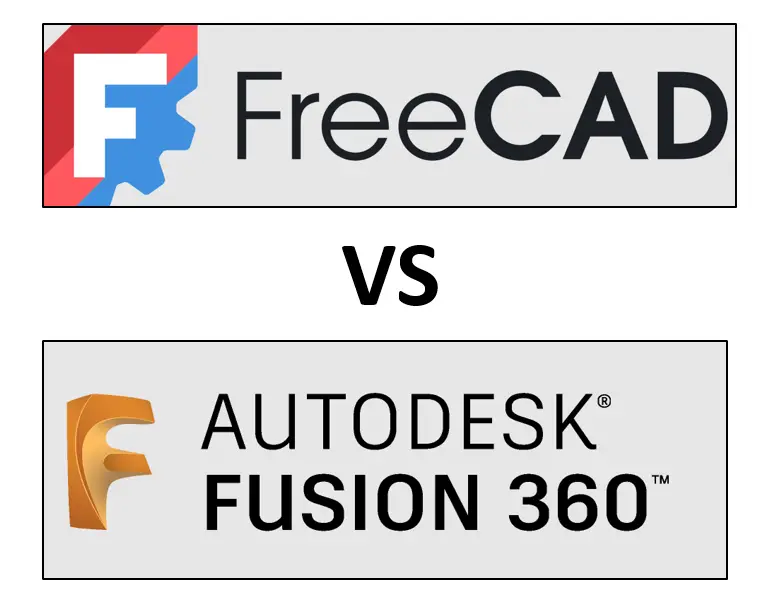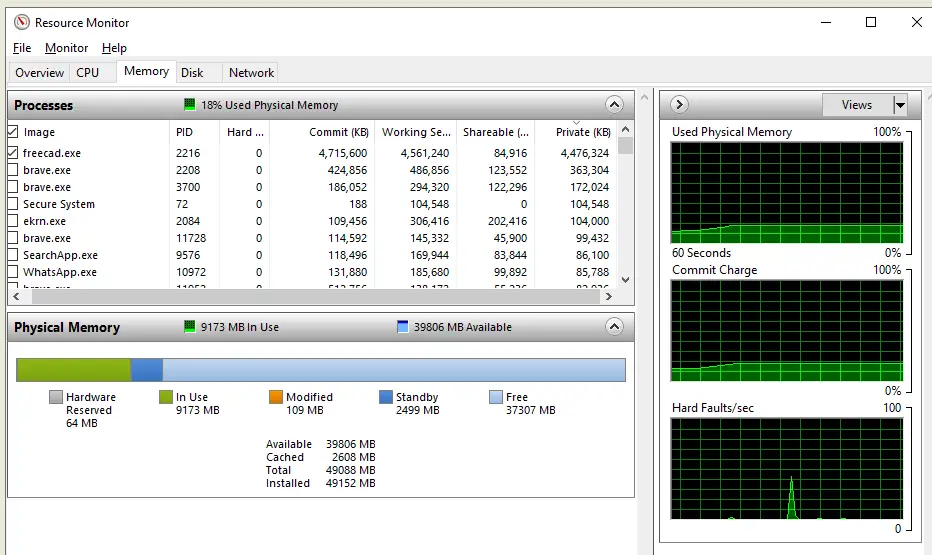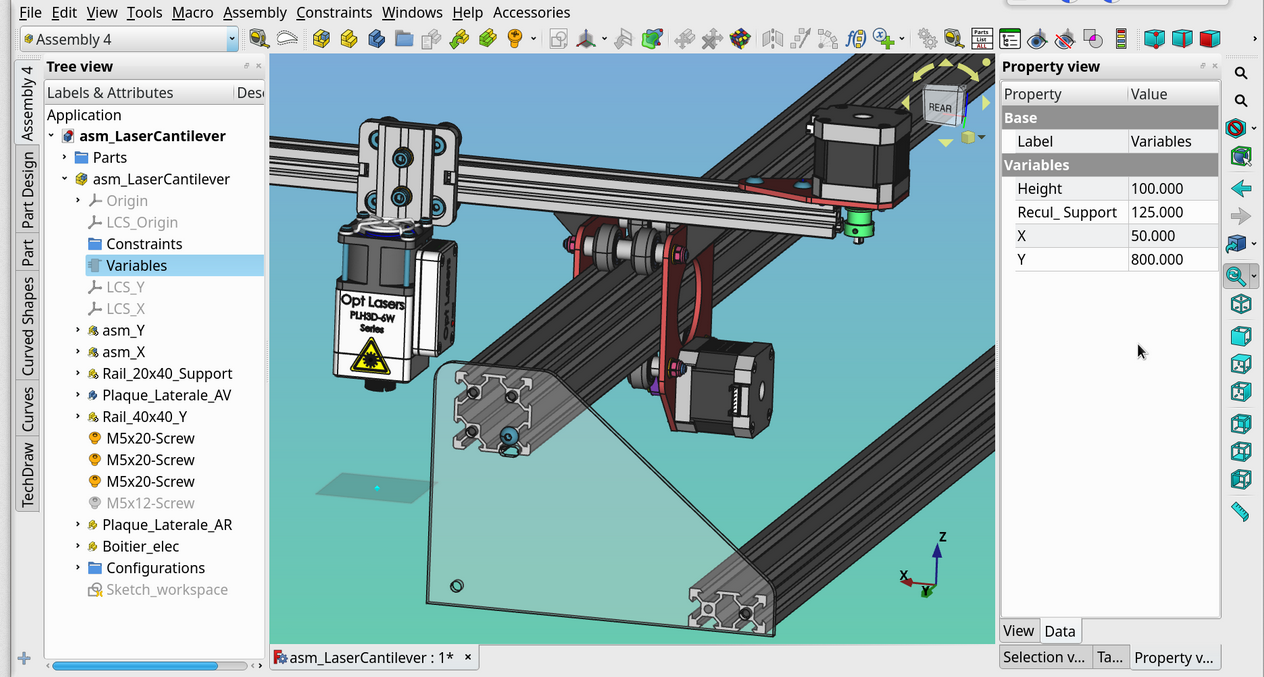
When comparing FreeCAD and Fusion 360, it is important to consider the specific needs of the user. For those looking for a free and open-source option, FreeCAD may be the ideal choice as it offers a wide range of features for CAD modeling, design, and simulation without any cost. On the other hand, Fusion 360 provides advanced tools for parametric modeling, simulation, rendering, and collaboration with a cloud-based platform that enables seamless integration across multiple devices.
While both software have their strengths and weaknesses, Fusion 360 stands out for its user-friendly interface and powerful capabilities which make it particularly suitable for professional designers and engineers working in diverse industries. In conclusion, the best CAD software ultimately depends on individual preferences and project requirements. Choosing between FreeCAD and Fusion 360 depends on your specific needs, budget, and workflow preferences. Both are powerful CAD tools, but they cater to different audiences.
Related Posts-:
- Measure Area, Volume & Center of Mass with Python Script
- Import Existing FreeCAD Setting on Fresh FreeCAD Installation
- FreeCAD with Python Scripting. Make Tools and Workflows
Here’s a detailed comparison to help you decide which one is best for you:
1. Cost comparison of FreeCAD vs. Fusion 360-:

When comparing the costs of FreeCAD and Fusion 360, it is important to note that FreeCAD is an open-source software available for free, while Fusion 360 is a paid subscription-based CAD/CAM tool developed by Autodesk. FreeCAD offers all the basic features needed to create 3D models and technical drawings without any cost, making it an attractive option for small businesses or individuals on a tight budget. On the other hand, Fusion 360 has more advanced functionalities such as simulation tools, cloud storage, and collaboration capabilities that come with a monthly or annual fee. Therefore, for those who require more robust features and support, investing in Fusion 360 may be worth the cost. Ultimately, the decision between FreeCAD and Fusion 360 should be based on individual needs and budget constraints.
- FreeCAD:
- Free and Open-Source: FreeCAD is completely free to use, with no subscription fees or hidden costs.
- No Licensing Restrictions: You can use it for personal, commercial, or educational purposes without limitations.
- Fusion 360:
- Subscription-Based: Fusion 360 operates on a subscription model. While it offers a free license for hobbyists, startups, and educators, the free version has limitations (e.g., 10 editable documents at a time).
- Paid Plans: Commercial users need to purchase a subscription, which can be expensive for small businesses or individuals.
Winner: FreeCAD (for cost-effectiveness).
2. Features and Capabilities comparison of FreeCAD vs. Fusion 360-:

FreeCAD and Fusion 360 are two prominent CAD software programs with distinct features and capabilities catering to different user needs. FreeCAD, an open-source software, offers a wide range of tools for 3D modeling, parametric design, and meshing simulations. Its strengths lie in its versatility and customization options, making it an ideal choice for experienced users looking for a free alternative. On the other hand, Fusion 360 is a comprehensive cloud-based CAD software developed by Autodesk, renowned for its advanced tools for industrial designers and engineers. It excels in collaborative work environments, offering integrated CAM functionality and robust simulation capabilities. While FreeCAD provides a cost-effective solution with basic features suitable for beginners or hobbyists, Fusion 360 stands out as a professional-grade software with powerful tools designed for complex projects in engineering and manufacturing industries. Ultimately, the choice between the two depends on the specific requirements of the user and the level of sophistication needed in their designs.
- FreeCAD:
- Parametric Modeling: FreeCAD is built around parametric modeling, allowing you to create models that can be easily modified by changing parameters.
- Modular Workbenches: FreeCAD offers specialized workbenches for different tasks (e.g., Part Design, Sketcher, FEM, Path for CAM).
- Open-Source Flexibility: You can customize FreeCAD or add new features using Python scripting.
- Limited Advanced Features: While powerful, FreeCAD lacks some advanced features found in commercial software, such as advanced simulation or rendering tools.
- Fusion 360:
- All-in-One Solution: Fusion 360 combines CAD, CAM, CAE, and PCB design in a single platform.
- Cloud-Based: Fusion 360 is cloud-enabled, allowing for easy collaboration and access from multiple devices.
- Advanced Tools: It includes advanced features like generative design, realistic rendering, and integrated simulation.
- Ease of Use: Fusion 360 has a more polished and user-friendly interface compared to FreeCAD.
Winner: Fusion 360 (for advanced features and ease of use).
Related Posts-:
- Advantages of FreeCAD That Every FreeCAD user Must Know
- Power of FreeCAD: Essential Tools for Mechanical Engineers
- Enhance Design Skills: Essential FreeCAD Tips for Better Creations
3. Learning Curve comparison of FreeCAD vs. Fusion 360-:

When comparing the learning curve of FreeCAD and Fusion 360, it is important to acknowledge the differences in their user interfaces and functionalities. FreeCAD, as an open-source software, may have a steeper learning curve due to its complex interface and limited resources for beginners. However, once users become familiar with its features such as parametric design and assembly module, they can leverage its powerful capabilities for engineering and designing projects. On the other hand, Fusion 360 offers a more intuitive user interface and comprehensive tutorials that facilitate faster learning for novice users. Its cloud-based platform allows for collaborative work and seamless integration with other Autodesk products. Although both software have their strengths and weaknesses, professionals may find Fusion 360 to be more accessible and user-friendly for quick project turnaround times. Ultimately, the choice between FreeCAD and Fusion 360 depends on individual preferences and project requirements.
- FreeCAD:
- Steeper Learning Curve: FreeCAD’s interface and workflow can be less intuitive, especially for beginners.
- Community-Driven Support: While there are tutorials and forums, the learning resources are not as extensive as Fusion 360’s.
- Fusion 360:
- Beginner-Friendly: Fusion 360 has a more intuitive interface and extensive learning resources, including tutorials, webinars, and a large user community.
- Guided Workflows: The software often provides prompts and guides to help users complete tasks.
Winner: Fusion 360 (for beginners).
Related Posts-:
- Unlock the Power of FreeCAD: How to Start Using Macros Today
- FreeCAD Community: A Guide to Connecting and Collaborating with Users
- How FreeCAD Becomes a Student’s Best Friend in Learning CAD
4. System Requirements and Performance-:

When comparing the system requirements and performance of FreeCAD versus Fusion 360, it is important to consider several key factors. FreeCAD is an open-source parametric 3D modeling software that runs on Windows, Mac, and Linux operating systems. It is relatively lightweight and can run on older hardware with minimal requirements. On the other hand, Fusion 360 is a cloud-based CAD/CAM software developed by Autodesk, which offers more advanced features such as simulation tools and collaborative capabilities. However, this also means that Fusion 360 requires a stable internet connection and higher system specifications to run smoothly. Ultimately, the choice between FreeCAD and Fusion 360 will depend on the user’s specific needs and preferences in terms of functionality, ease of use, and available hardware resources.
- FreeCAD:
- Lightweight: FreeCAD is less resource-intensive and can run on older or less powerful hardware.
- Offline Use: FreeCAD works entirely offline, making it ideal for users with limited or no internet access.
- Fusion 360:
- Cloud Dependency: Fusion 360 requires an internet connection for most tasks, though some offline functionality is available.
- Higher System Requirements: Fusion 360 demands more powerful hardware, especially for complex models and simulations.
Winner: FreeCAD (for low-resource systems and offline use).
Related Posts-:
- FreeCAD Integration with KiCAD
- Exploring the Future of FreeCAD: Innovations and Trends to Watch
- FreeCAD as An Open-Source Parametric 3D Modeling Software
5. Customization and Extensibility comparison of FreeCAD vs. Fusion 360 -:

When comparing the customization and extensibility of FreeCAD to Fusion 360, it is important to consider the unique strengths and limitations of each software. FreeCAD, being an open-source platform, offers a high level of customization through its modular design and extensive library of user-created plugins. This allows users to tailor the software to their specific needs and workflows, making it suitable for a wide range of industries and applications. On the other hand, Fusion 360, with its cloud-based architecture and seamless integration with other Autodesk products, provides a more streamlined approach to collaboration and project management. While Fusion 360 may lack some of the flexibility of FreeCAD in terms of customization, its robust feature set and strong support from Autodesk make it a popular choice for professional designers and engineers looking for a comprehensive solution. Ultimately, the decision between FreeCAD and Fusion 360 will depend on the specific requirements of the user’s project and workflow.
- FreeCAD:
- Highly Customizable: Being open-source, FreeCAD can be modified and extended using Python scripting.
- Community Add-ons: Users can create and share custom workbenches, macros, and plugins.
- Fusion 360:
- Limited Customization: Fusion 360 is proprietary, so customization options are limited to what Autodesk provides.
- API Access: Fusion 360 does offer an API for scripting and automation, but it’s not as flexible as FreeCAD’s open-source environment.
Winner: FreeCAD (for customization and extensibility).
Related Posts-:
- FreeCAD vs. Fusion 360: Which one is Best CAD Software
- Exploring FreeCAD Macros and Python Scripting
- FreeCAD Community: Connect and Collaborate with Users
6. Collaboration and Cloud Integration comparison of FreeCAD vs. Fusion 360-:

When comparing FreeCAD and Fusion 360 in terms of collaboration and cloud integration, both software offer unique advantages. FreeCAD, as an open-source platform, allows for easy collaboration through its compatibility with various file formats, making it a popular choice among users working on collaborative projects. However, Fusion 360 excels in cloud integration, providing seamless access to projects and data from any device with internet connectivity. Its cloud-based storage ensures that files are always up-to-date and easily accessible by team members. Additionally, Fusion 360 offers real-time collaboration features such as live review sessions which enable teams to work together efficiently. Ultimately, the choice between FreeCAD and Fusion 360 depends on the specific needs of the project and the preferences of the users involved in the collaboration process.
- FreeCAD:
- Local Files: FreeCAD saves files locally, which can make collaboration more challenging.
- No Cloud Integration: FreeCAD lacks built-in cloud features, though you can use third-party tools for file sharing.
- Fusion 360:
- Cloud Collaboration: Fusion 360’s cloud-based platform makes it easy to share files and collaborate in real-time.
- Version Control: Fusion 360 automatically saves versions of your designs in the cloud.
Winner: Fusion 360 (for collaboration and cloud integration).
Related Posts-:
- Let’s Explore the FreeCAD Workbench
- Benefits of FreeCAD Realthunder Branch
- Introduction to FreeCAD: A Beginner’s Guide
7. Use Cases comparison of FreeCAD vs. Fusion 360-:

In comparing the use cases of FreeCAD and Fusion 360, it is important to consider the specific needs and requirements of the user. FreeCAD, being an open-source parametric 3D modeling software, is well-suited for users looking for a free and versatile tool for designing objects and parts. It offers a wide range of features such as sketcher, part design, and assembly modules which make it ideal for mechanical engineering projects. On the other hand, Fusion 360 is a cloud-based CAD/CAM software developed by Autodesk with more advanced tools for industrial design, engineering, and manufacturing. It provides powerful simulation capabilities, integrated CAM functionality, and collaboration tools making it suitable for professional designers requiring complex designs and functionalities. Ultimately, the choice between FreeCAD and Fusion 360 boils down to the specific requirements of the user and the complexity of their projects.
- FreeCAD:
- Hobbyists and Makers: Ideal for users who want a free, open-source tool for personal projects.
- Small Businesses: Suitable for small businesses with limited budgets.
- Education: Great for teaching CAD concepts without licensing costs.
- Custom Development: Perfect for developers who want to customize their CAD software.
- Fusion 360:
- Professionals and Businesses: Best for professionals and businesses that need advanced features and cloud collaboration.
- Startups: Fusion 360’s free startup license is a good option for small teams.
- Advanced Simulations: Ideal for users who need integrated simulation and generative design tools.
Related Posts-:
- How FreeCAD Becomes a Student’s Best Friend in Learning CAD
- Enhance Your Design Skills: Essential FreeCAD Tips for Better Creations
- Advantages of FreeCAD That Every FreeCAD user Must Know
Summary: Which is Best for You?
- Choose FreeCAD if:
- You need a free, open-source CAD tool.
- You prefer offline use and have limited hardware resources.
- You want to customize or extend the software.
- You’re a hobbyist, student, or small business with a tight budget.
- Choose Fusion 360 if:
- You need advanced features like simulation, rendering, and generative design.
- You value ease of use and a polished interface.
- You require cloud-based collaboration and version control.
- You’re a professional or business willing to pay for a subscription.
Both FreeCAD and Fusion 360 are excellent tools, but the best choice depends on your specific needs and priorities. Let me know if you need further clarification!
“Thank you for reading! If you found this article insightful and valuable, consider sharing it with your friends and followers on social media. Your share can help others discover this content too. Let’s spread knowledge together. Your support is greatly appreciated!”

